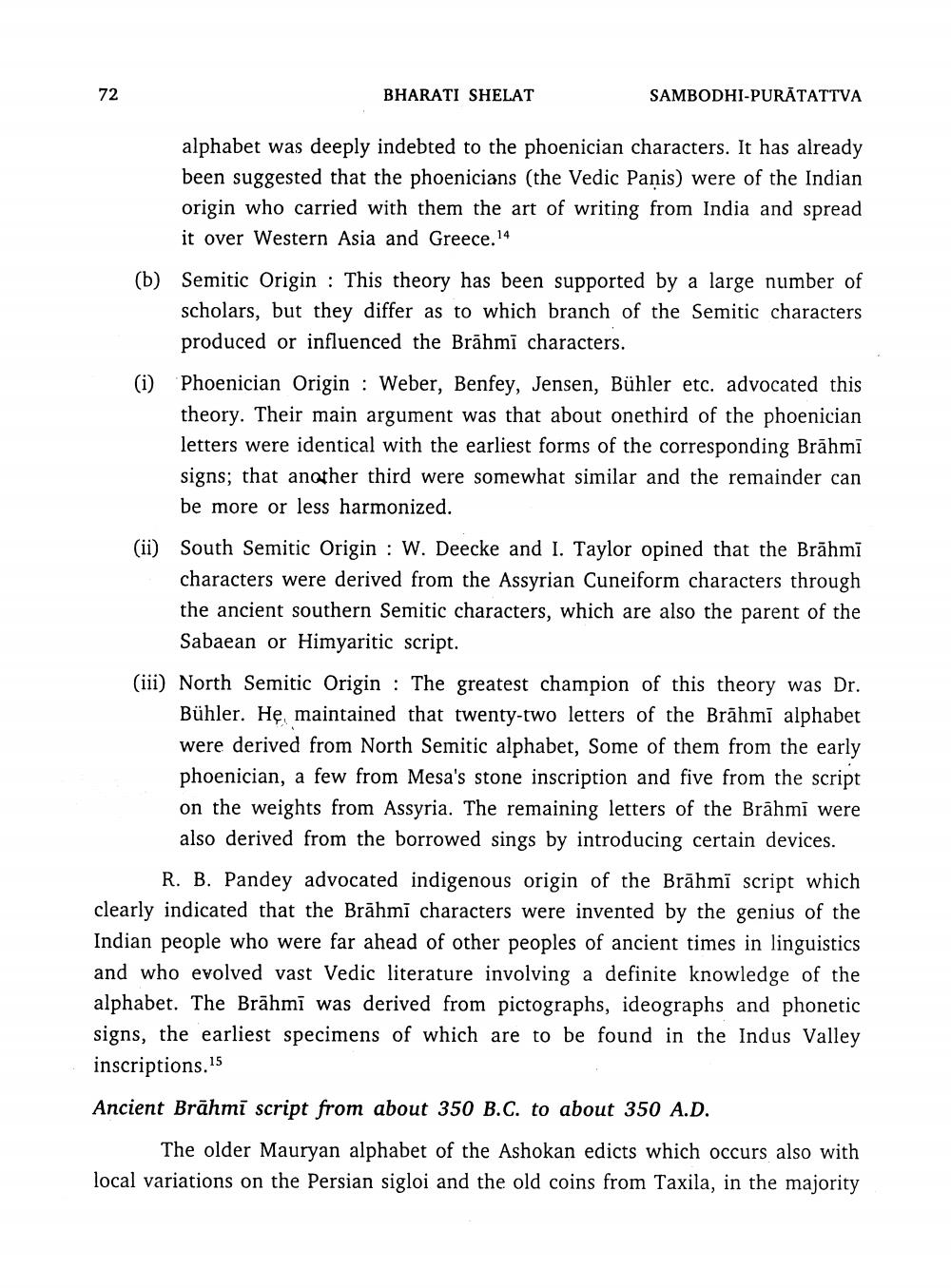________________
BHARATI SHELAT
SAMBODHI-PURĀTATTVA
alphabet was deeply indebted to the phoenician characters. It has already been suggested that the phoenicians (the Vedic Panis) were of the Indian origin who carried with them the art of writing from India and spread it over Western Asia and Greece.14
Semitic Origin : This theory has been supported by a large number of scholars, but they differ as to which branch of the Semitic characters produced or influenced the Brāhmi characters.
(i)
Phoenician Origin : Weber, Benfey, Jensen, Bühler etc. advocated this theory. Their main argument was that about onethird of the phoenician letters were identical with the earliest forms of the corresponding Brāhmī signs; that another third were somewhat similar and the remainder can be more or less harmonized.
(ii) South Semitic Origin : W. Deecke and I. Taylor opined that the Brāhmi
characters were derived from the Assyrian Cuneiform characters through the ancient southern Semitic characters, which are also the parent of the Sabaean or Himyaritic script.
(iii) North Semitic Origin : The greatest champion of this theory was Dr.
Bühler. He, maintained that twenty-two letters of the Brāhmi alphabet were derived from North Semitic alphabet, Some of them from the early phoenician, a few from Mesa's stone inscription and five from the script on the weights from Assyria. The remaining letters of the Brāhmi were also derived from the borrowed sings by introducing certain devices.
R. B. Pandey advocated indigenous origin of the Brāhmi script which clearly indicated that the Brāhmi characters were invented by the genius of the Indian people who were far ahead of other peoples of ancient times in linguistics
ho evolved vast Vedic literature involving a definite knowledge of the alphabet. The Brāhmi was derived from pictographs, ideographs and phonetic signs, the earliest specimens of which are to be found in the Indus Valley inscriptions.15
Ancient Brāhmi script from about 350 B.C. to about 350 A.D.
The older Mauryan alphabet of the Ashokan edicts which occurs also with local variations on the Persian sigloi and the old coins from Taxila, in the majority




